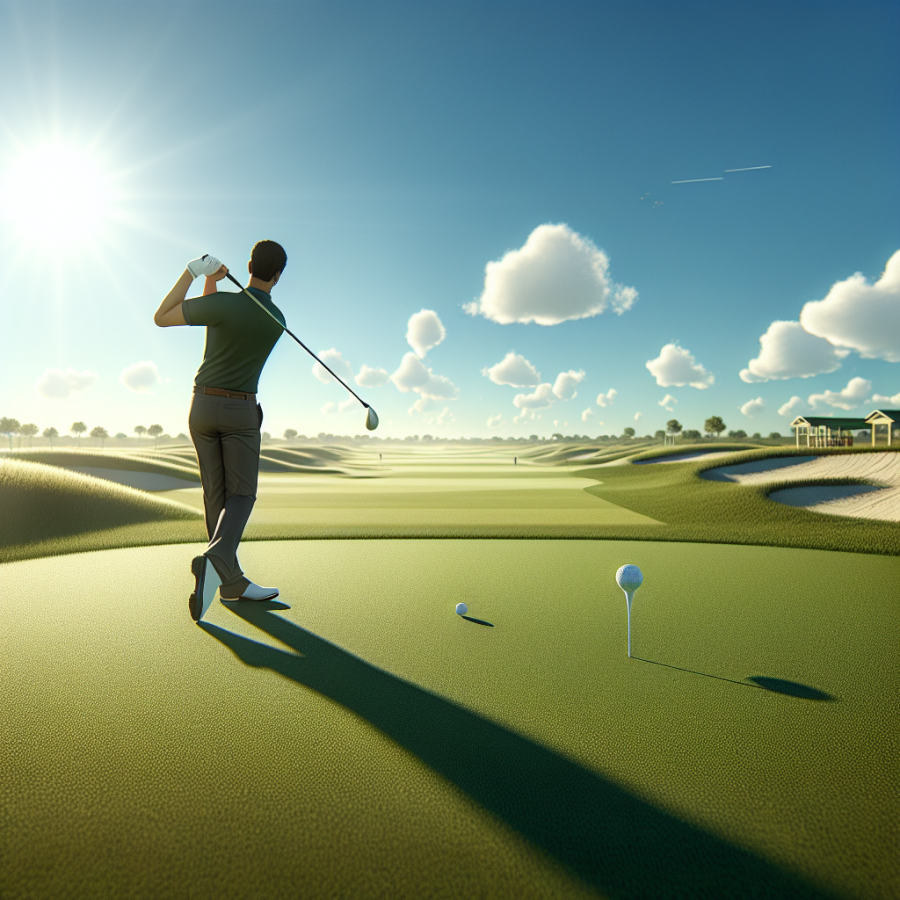The Physics Behind the Golf Ball's Rightward Curve
When a right-handed golfer hits their shot and it takes an unexpected right turn, it is often referred to as a 'slice.' This phenomenon, which can be a pesky roadblock in a golfer's game, can be explained using the principles of physics. These principles include the lift force, drag force, the Magnus effect, and the spin of the golf ball.
To begin, every golf ball hit has a certain amount of spin. The golfer's club strikes the ball on one side, and the friction between the clubface and the ball imparts spin. For a right-handed golfer, especially one who mistakenly hits the ball with an open clubface, that spin is clockwise when viewed from behind.
The spinning ball moving through the air experiences a 'lift force.' As per Bernoulli’s principle, the air moves faster over the top surface of the ball than beneath it, creating a pressure difference that exert an upward force known as 'lift.' However, in the case of a golf ball, due to its spin, this lift force is tilted to the right for a right-handed golfer. This tilt can turn the ball's flight to the right.
Simultaneously, the golf ball also encounters air resistance or 'drag force' while in motion, slowing its forward momentum. Two types of drag affect a golf ball: the pressure drag that results from air pressing against the front of the ball, and the friction drag caused by the air brushing against the ball's surface. The drag force does play a minor role in the curving of the ball, but its primary effect is in reducing the ball's speed and thus, its travel distance.
The deflection of the path of a spinning ball in the air due to a pressure difference created by its rotation is known as the 'Magnus effect.' As a golf ball spins, it disturbs the air around it and causes a difference in pressure between the two sides of the ball. This pressure difference forces the ball to move in the direction of the spin. Therefore, for a golf ball with a clockwise spin (from the perspective of a right-handed golfer standing behind it), the Magnus effect causes a curve to the right.
Besides, the golf ball's dimpled surface enhances its lift and helps prolong its flight. These dimples reduce air pressure drag by trapping a thin layer of air against the ball's surface, reducing the drag and allowing it to travel farther.
Read also:
Unleashing the Thrill: The Evolution of Skateboarding Culture"
Influential Factors Causing a Golf Ball to Veer Right
The inclination of the golf club during impact, aptly named 'clubface angle', is one of the most critical factors that cause a golf ball to veer right. If the clubface is open—angled to the right of the target line at impact—for a right-handed golfer, the ball will veer right of the intended target irrespective of the swing path. Conversely, for left-handed golfers, if the clubface is open or angled to the left of the target line, the golf ball will veer to the right. The greater the clubface’s divergence from the target line, the more the ball will deviate to the right.
Another significant determinant relates to the 'swing path'. For a right-handed golfer, if the clubhead is traveling from outside to inside the target line (an 'out-to-in swing path') at the moment of impact, the ball is likely to take a path to the right. For left-handed golfers, an 'in-to-out swing path' can have the same effect. This happens because the path of the club at impact imparts left-to-right spin (also known as 'slice spin') on the ball which causes it to move right in mid-air.
The golfer's grip, too, can influence the trajectory of the golf ball. A 'weak grip', which involves the hands being turned more towards the target, enhances the chances of the clubface being open at impact, likely causing the ball to veer right.
Golf ball's spin also plays a huge role in the direction the ball flies. The ball's dimples create lift by causing air to move faster over the top of the spherical shape, similar to an airplane wing. But if the ball rotates as it flies (backspin), that can tilt the direction of this lift in any direction. This phenomenon, known as the 'Magnus Effect', illustrates that rightward spin (viewed from behind) will cause the ball to shift to the right.
Finally, the conditions of the golf course and wind direction can affect the flight of the golf ball as well. If the wind is blowing from left to right, it can carry the ball to the right. Moreover, the slope of the landing area can cause the ball to bounce and roll to the right upon impact.




